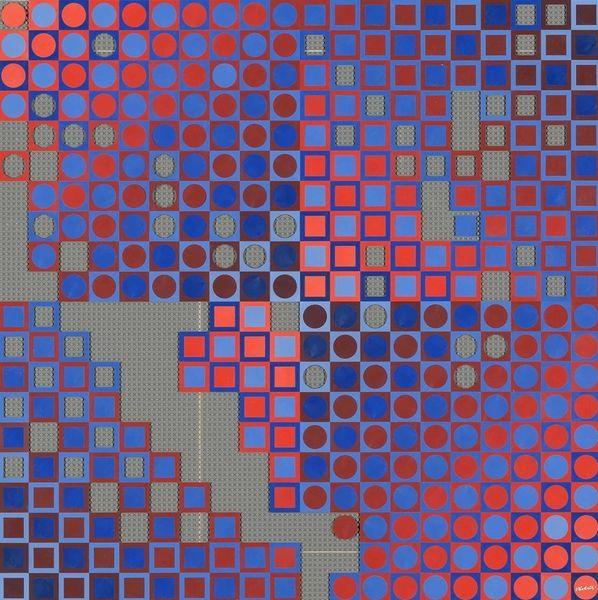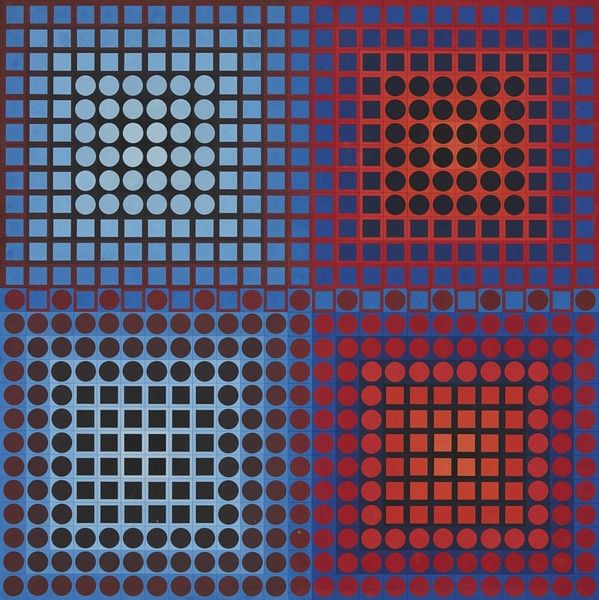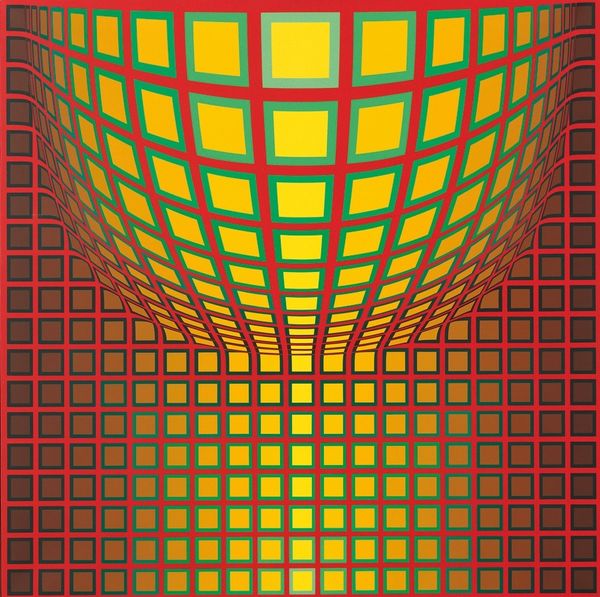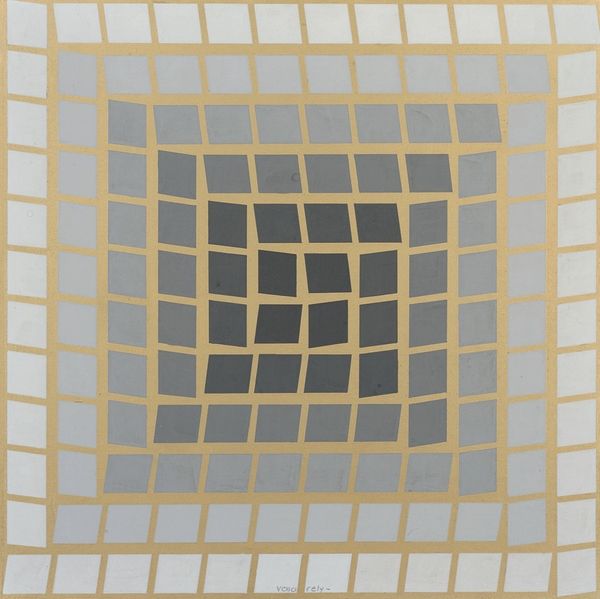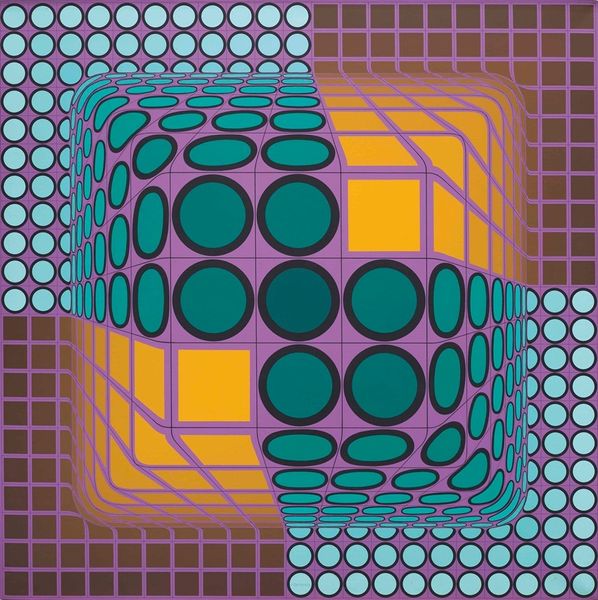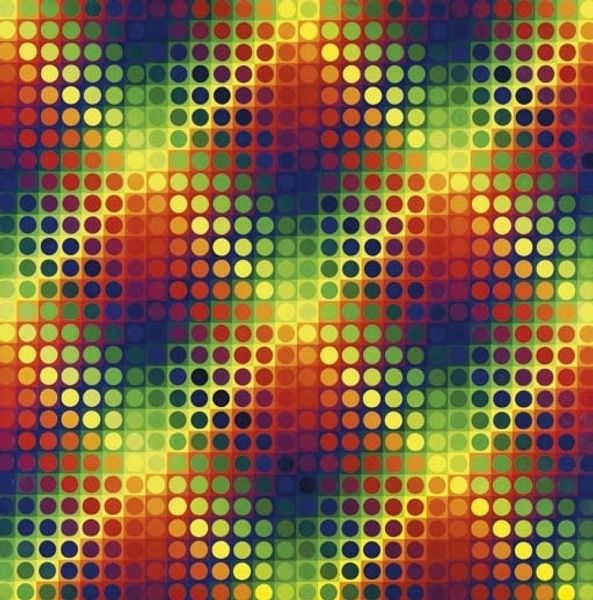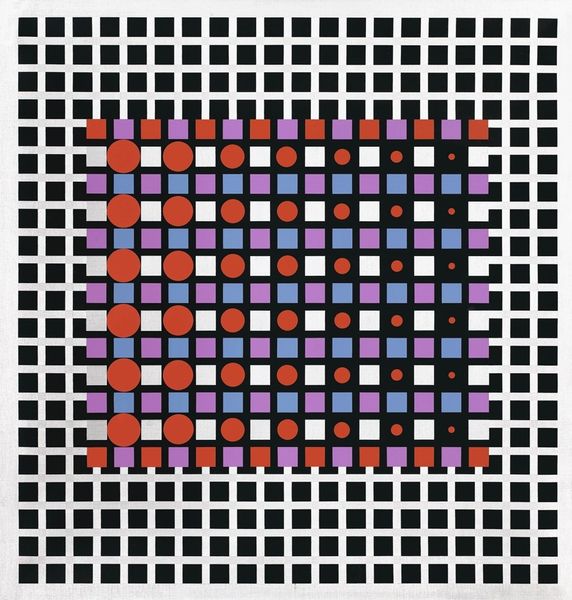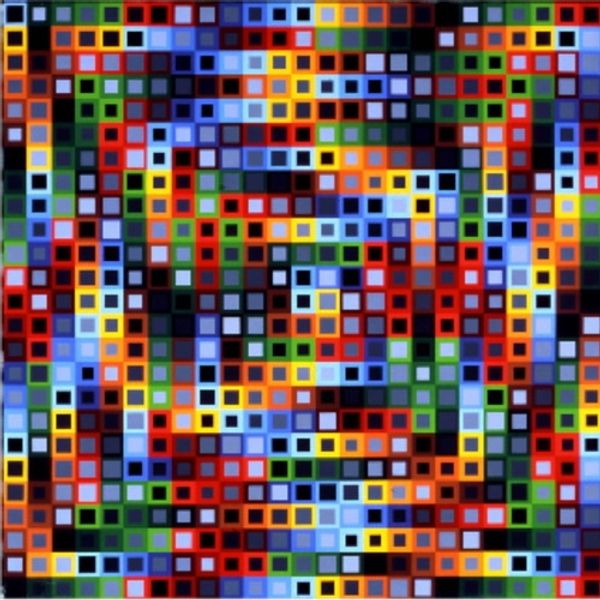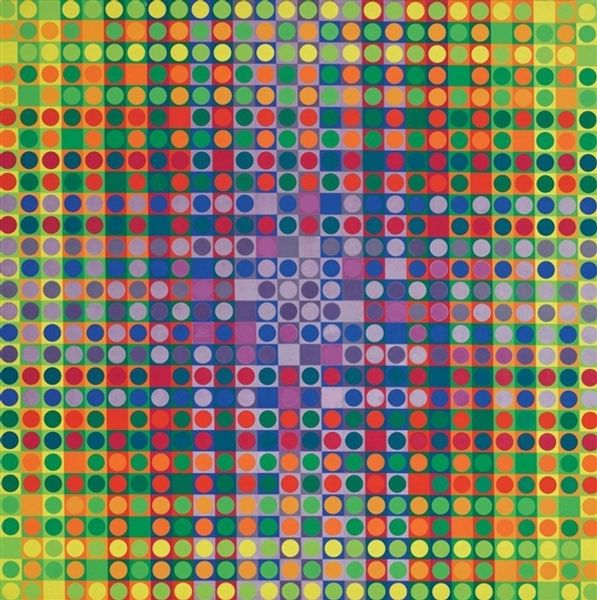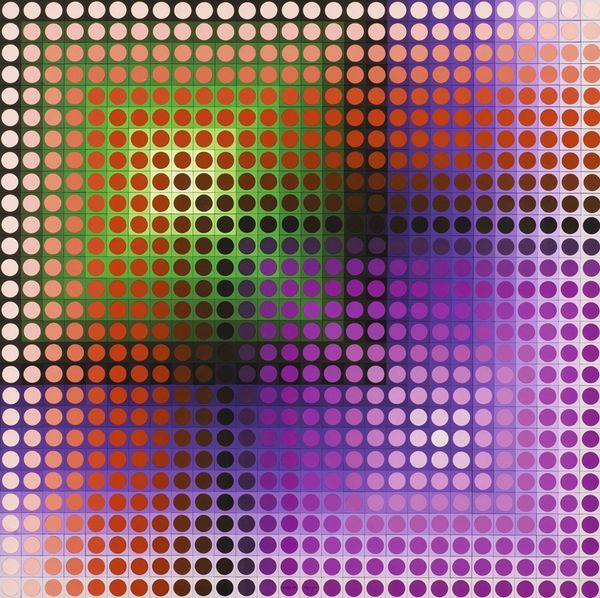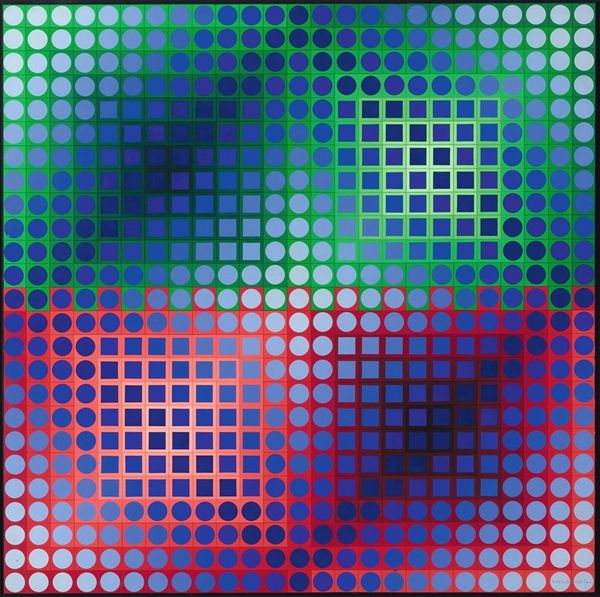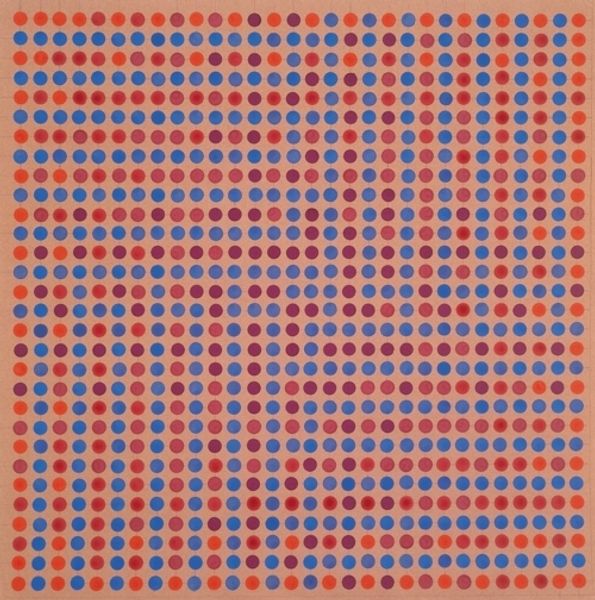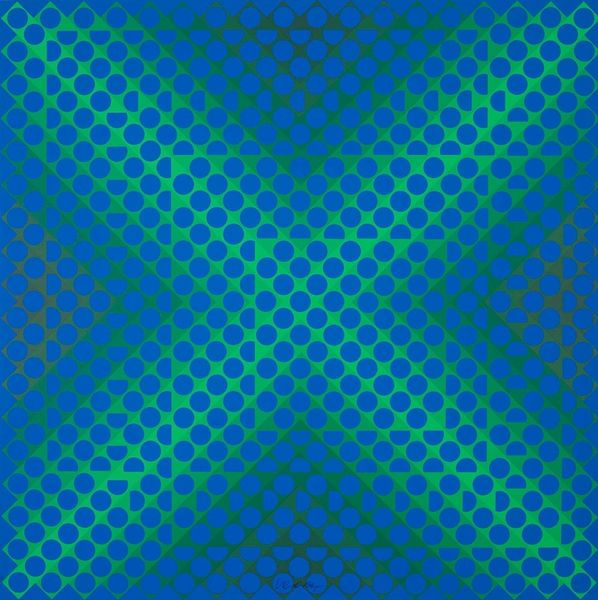
acrylic-paint
#
op-art
#
acrylic-paint
#
abstract
#
geometric pattern
#
abstract pattern
#
minimal pattern
#
organic pattern
#
geometric
#
repetition of pattern
#
vertical pattern
#
abstraction
#
regular pattern
#
pattern repetition
#
layered pattern
#
combined pattern
#
hard-edge-painting
Copyright: Modern Artists: Artvee
Victor Vasarely created ‘Kezdi’ using oil on canvas, demonstrating his mastery of Op Art, or optical art. Vasarely built up the composition through careful arrangement of geometric shapes and vibrant colors. Notice the relationship between the squares and circles, each painted in gradating shades of blue, green, and red. The colors shift and change, creating a sense of depth. The effect is heightened by the grid format, which gives the impression of a receding plane. But how was it made? It is likely he used techniques like masking and stenciling to achieve such precision. This contrasts with gestural painting, where the artist's hand is clearly visible. Here, the human touch seems almost absent, reflecting the clean lines of industrial design and mass production. Vasarely’s serial approach and industrial aesthetic aimed to democratize art, making it accessible to a broader audience. This challenges the traditional idea of the artist as a solitary genius, instead embracing a vision of art integrated into everyday life.
Comments
No comments
Be the first to comment and join the conversation on the ultimate creative platform.

